What is IMS?
Intramuscular Stimulation (IMS) is a dry needling technique that uses acupuncture needles to release shortened and tender muscle bands from neuro-musculoskeletal dysfunction. It is a diagnostic and treatment tool for myofascial pain of neuropathic origins. This treatment technique was first developed by Dr. Chan Gunn (C.M., O.B.C., M.D., PhD.), and bridges the gap between traditional Chinese acupuncture and western medicine.
How does IMS work?
Very often, the nerves throughout your body can get hypersensitive, stemming from trauma and/or repetitive strain. When irritated, nerves’ supply to your muscles becomes abnormal, which in turn causes the muscles to become super-reactive and shortened. This manifests itself as tightness and stiffness in your body. After a fine needle is inserted into a supersensitive muscle, the muscle will grasp it and create a cramping sensation. This will then stimulate a reaction that leads to the release of endorphins, resulting in relaxation. The tiny wound caused by the needle’s introduction into the muscle can further induce the healing process. Once the tension in your muscle has been reduced, it decreases stress and tendon slackening, and decreases the pressure that is being put on your joints, discs, and nerves. As a result, the pain signal is reduced and the muscle relaxation slowly returns the blood flow to the area. Furthermore, this allows the nerve and muscle to re-pattern to normal function. A diagnostic test such as an X-ray, CT scan, or MRI may not show any visible signs of your injury, making it impossible to detect supersensitive muscles through conventional means. However, an assessment by a trained Gunn IMS practitioner can help determine if this technique is suitable for you.
What conditions may benefit from IMS?
A wide range of neuro-musculoskeletal problems, such as the following:
- Tension and headaches
- Neck pain and whiplash
- Upper, mid, and low back pain
- Frozen shoulder and rotator cuff tendinopathy
- Tennis elbow
- Carpal tunnel syndrome
- Sciatica/piriformis syndrome
- Leg stiffness/numbness
- Plantar fasciitis
- Repetitive strain injuries
Does IMS hurt?
When a needle is inserted into a normal muscle, you will only feel the prick of the needle itself. However, if you have super sensitive muscles, you will feel a cramping, aching, or even grasping sensation. Some patients describe it simply as a pressure point, and some patients describe it as akin to a Charlie Horse. After your IMS treatment, you may experience increased soreness for a few days, followed by improvement in your overall pain state. Mild heat and resting may help to relieve post-treatment soreness.
How often is IMS needed?
Typically, treatments are once every 1-2 weeks in order to allow time for your body to recover. The number of treatments depends on the severity of the problem, the nature of the condition, your general health, your body’s healing ability, and the condition of your nerves. According to a published study on low back pain, the average number of treatments is 8.2 sessions.
Ready for Lasting Relief?
If you’re experiencing persistent pain, stiffness, or limited movement, Intramuscular Stimulation (IMS) could be the solution you’ve been searching for. Our trained Gunn IMS practitioners are ready to assess your condition and determine if this advanced dry needling technique is right for you.
Don’t let chronic pain hold you back any longer. Take the first step towards a more comfortable and active life.
Book Your IMS Assessment Today!


